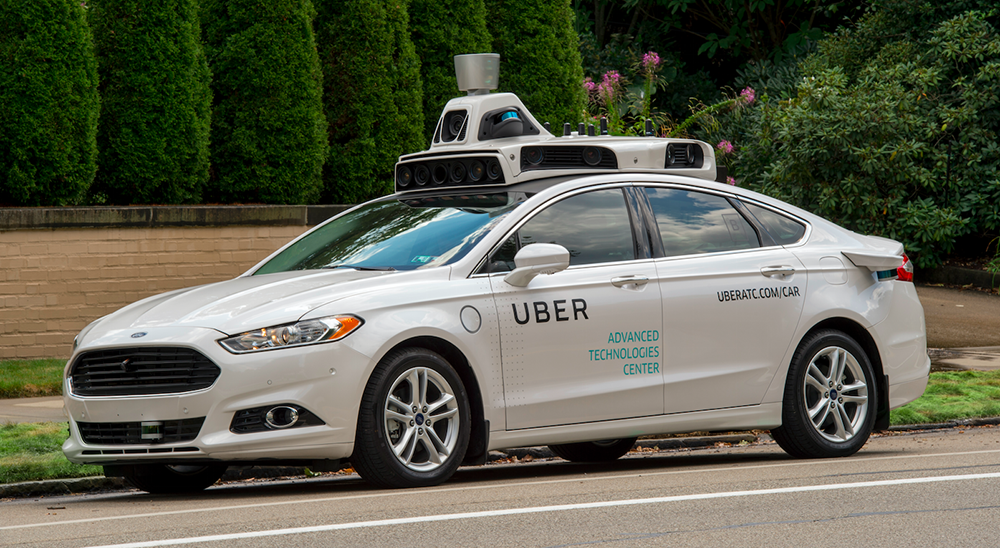WASHINGTON – More than 4 million jobs, including bus and motorcoach drivers, will likely be lost with a rapid transition to autonomous vehicles, a study by the Center for Global Policy Solutions predicts.

Delivery and heavy truck drivers, bus drivers, and taxi and chauffeur drivers would be heaviest hit, the study said.
The study, “Stick Shift: Autonomous Vehicles, Driving Jobs, and the Future of Work,” points out that more than 30 companies across the globe say they are working on autonomous-vehicle technology.
These companies range from computing-technology firms like Apple, Google and Intel to those usually associated with automobile manufacturing, such as BMW, Ford, Honda and Volvo.
Their most optimistic predictions are that in as few as three to five years, fully autonomous vehicles—automobiles without human drivers—will be in regular use on the road.
The impact on workers in driving occupations would be most severe if the move toward fully autonomous vehicles occurs quickly, the study found.
“This crisis is likely right around the corner,” said Maya Rockeymoore, the center’s president and CEO. “We need a strong safety net that can bolster workers in the event of large-scale, rapid job losses, along with policies that can transition them to new jobs.”
Predictions vary about whether fully autonomous vehicles, Level 5 on the SAE International classification scale for autonomous-vehicle technology, will be introduced first.
But given the progress already made with Level 4 technology—which marks the stage when vehicles are classified as being capable of safely driving themselves in predictable spaces—it is highly possible that the technology will progress to Level 5 in the near future, the study said.
The authors acknowledge that autonomous-vehicle technology offers a number of positive opportunities, such as the potential to save lives, limit environmental damage, increase productivity and, as a result, improve living standards across the country if the gains are distributed equally.
“But the technology also has the potential to cause significant economic hardship for a number of workers, at least in the short term,” the study said. “For those who drive vehicles for a living, the full financial impact of this technological change will depend, in large part, on whether the transition takes a while or occurs relatively quickly. It will also depend heavily on whether the initial technology deployed is fully or partially autonomous.”
The study said that 2.86 percent of all workers in the United States are employed in driving occupations.
Men and people of color nationally and workers in states such as North Dakota, Idaho, Wyoming, West Virginia, Mississippi, Arkansas, Iowa and Indiana would suffer disproportionate economic disruption from such a transition, according to the study.
In these states, workers are over represented in driving occupations and are paid significantly more than workers in non-driving occupations.
“Though it is possible that workers displaced by autonomous-vehicle technology may eventually find new jobs at some point, the analysis contained in this paper is focused on the immediate, short-term impact to employment in the transportation sector if a rapid transition to fully autonomous vehicles were to occur,” the study’s executive summary explained.
According to the study, of the nation’s 4.1 million driving jobs, 77 percent are delivery and heavy truck drivers, 14 percent are bus drivers, and 8 percent are taxi and chauffeur drivers.
There are 3.6 million men and about half a million women in these occupations.
Whites would be affected the most by job losses because they hold 62 percent of the jobs in driving occupations. But Blacks, Hispanics, and Native Americans, groups that are over represented in these occupations and who earn a “driving premium”—a median annual wage exceeding what they would receive in non-driving occupations—would also be hard hit.
Other findings in the study include:
- With 4.23 percent of Black workers employed in driving occupations, Blacks rely on driving jobs more than other racial/ethnic groups. This is true in every driving occupation category.
- With 3.25 percent of Hispanic workers in driving occupations, Hispanics have the second heaviest reliance and are especially over represented as delivery drivers and heavy truck drivers and very slightly as taxi drivers and chauffeurs.
Motorcoach operators say the industry could be affected less than others by autonomous vehicles because there currently is a shortage of bus drivers.




